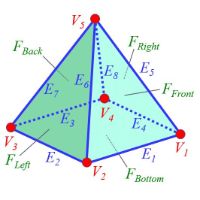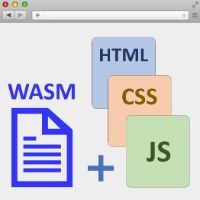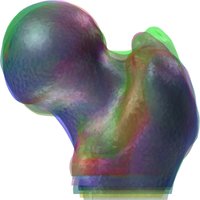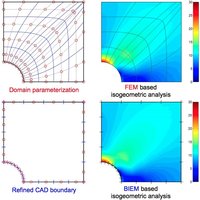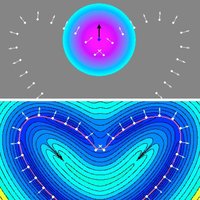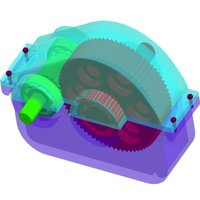Siemens Digital Industries Software
Physically based rendering (PBR) seeks to leverage on the physics of light in the real world in order to render photorealistic graphics in real-time. Compared to the traditional Blinn-Phong reflectance model, the PBR reflectance equation involves the Bidirectional Reflectance Distribution Function (BRDF), which respects the law of Conservation of Energy and hence yields much more photorealism. Due to the rapidly growing computing power of graphics hardware, all kinds of approximations of BRDF are easy to implement and the PBR rendering could be executed in real time. As a result, PBR has been an ideal rendering technique for fast rendering without sacrificing photorealism. This is why it has been popular in the film and game industry for so many years and recently the industry software companies like Siemens have started to support PBR rendering and materials as well.
Siemens Digital Industries Software
Boundary Representation (B-Rep) is a flexible, robust and powerful Solid Modeling technique that represents a 3D physical object by all the bounding surfaces. It is by far the most widely used modeling method in industry compared to other alternatives such as Constructive Solid Geometry (CSG), Feature-based Modeling and Implicit Representation. The B-Rep data structure is built upon an intercorrelated hierarchy of topological entities (face-edge-vertex) and geometric entities (surface-curve-point) that dictates how exactly a solid object is bounded. Most geometric modeling kernels capitalize on B-Rep to perform all sorts of solid operations. Parasolid is a representative kernel being extensively employed in both the research communities and the industry software business. The requirements of online visualization collaboration and unifying facet model operations have further expanded B-Rep's range of capacity by adopting the Ultra Lightweight Precise (ULP) format and introducing the practice of Convergent Modeling.
Siemens Digital Industries Software
Internet of Things (IoT) is a key component in the ongoing Industry 4.0 endeavor our world is experiencing. The IoT network requires numerous applications on a variety of computing platforms to migrate onto the network and become the web applications, particulary in the graphics and real-time rendering related fields such as Virtual Reality (VR), Augmented Reality (AR) , visualization and so on. It is rather cumbersome or even impossible to port applications developed in C/C++ source code to native web applications by the triad of Html, CSS and JavaScript. This is where WebAssembly (WASM) comes into play: it converts original source code to WASM assembly code and then to machine code. This compilation is a one-time deal for all platforms and will instantly run on a web browser. The WASM compile also takes less time than JavaScript.
Illinois Institute of Technology
A Statistical Shape Model (SSM) serves as a compact characterization of the shape variation pattern in a group of shapes (training set). Building SSM reduces to searching for correspondence across the entire training set shape instances. The population-based approach formulates the search as an optimization problem that minimizes a measure of resultant SSM, and during optimization, the correspondence updates are achieved by reparameterizing shapes in the parameter space. Previously, the reparameterization function is modeled by concatenating a large number of local warps, leading to extremely inefficient iterations and huge time cost. We propose a direct representation of the reparameterization function by B-splines, develop associated diffeomorphism conditions and derive fast gradient formula by adjoint method. Both synthetic examples and real medical applications have confirmed the effectiveness of proposed algorithm and the efficiency advantages.
Illinois Institute of Technology
Isogeometric analysis (IGA) uses the same basis functions that represent geometry for approximating physical fields in analysis. This closer integration of CAD and FEA greatly alleviates the burden of converting CAD geometry to analysis-ready models. As the standard geometric form in CAD systems, basis functions generated from NURBS, are employed to construct an exact geometric model. Convergence study on plenty of examples shows that NURBS basis function based FEA exhibits superior computational advantage to its traditional counterpart --- Lagrange polynomials based FEA. Despite the performance improvements due to choosing NURBS basis functions over Lagrange polynomials, analysis framework using Finite Element Method (FEM) is unable to avoid the expensive domain parameterization. We explore the Boundary Integral Equation Method (BIEM) based isogeometric analysis, which requires only the NURBS boundary. Analysis examples show further computational advantage of BIEM-IGA to FEM-IGA, and the proposed techniques are also utilized for shape optimization.
Illinois Institute of Technology
As 3D scanning devices and technologies become more and more popular, algorithms are widely needed for the geometric processing on scan data in product design/analysis/manufacturing. Traditional approach typically involves an intermediate conversion to triangle mesh. Our proposed algorithm utilizes the promising Moving Least Square definition for point-set surfaces representation; it works directly on point data and circumvents the mesh conversion step, significantly improving the efficiency of the entire product development life cycle. We have focused on the additive manufacturing (3D printing) capabilities of proposed technique, and developed a smart slicing algorithm with both geometric and topological awareness. The algorithm has been tested on digital models and we have also demonstrated its ability in transmitting 3D geometric manufacturing data in a tele-fabrication practice.
Syracuse University
In the broad field of Product Development, Product Lifecycle Management (PLM) is of great importance to the design and manufacturing part throughout the whole process. The development of ontological assembly representation was initiated from several considerations concerning assembly representation for PLM. Ontological representation, due to its inherent advantages, can help achieve high interoperability level that enables efficient implementation of PLM and identify a common data structure to allow data exchange between platforms. There are several kinds of software that is able to perform ontology-based modeling and analysis, and Protégé is a commonly used and powerful tool in this area. To make this idea more clear, this report will choose a typical assembly case, namely a reduction gearbox, build the corresponding ontology and explore the ontology assembly model by using related plug-ins.

